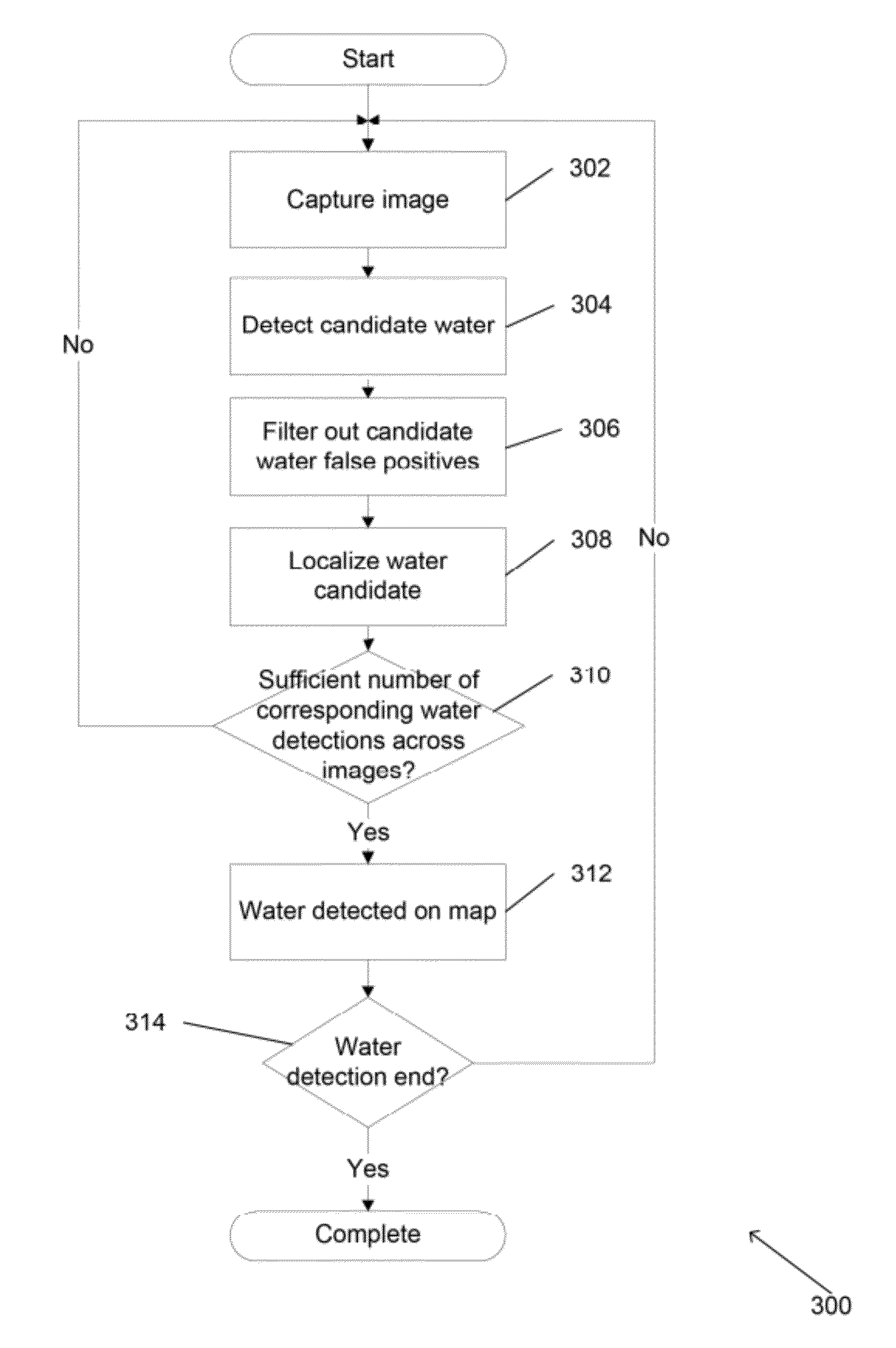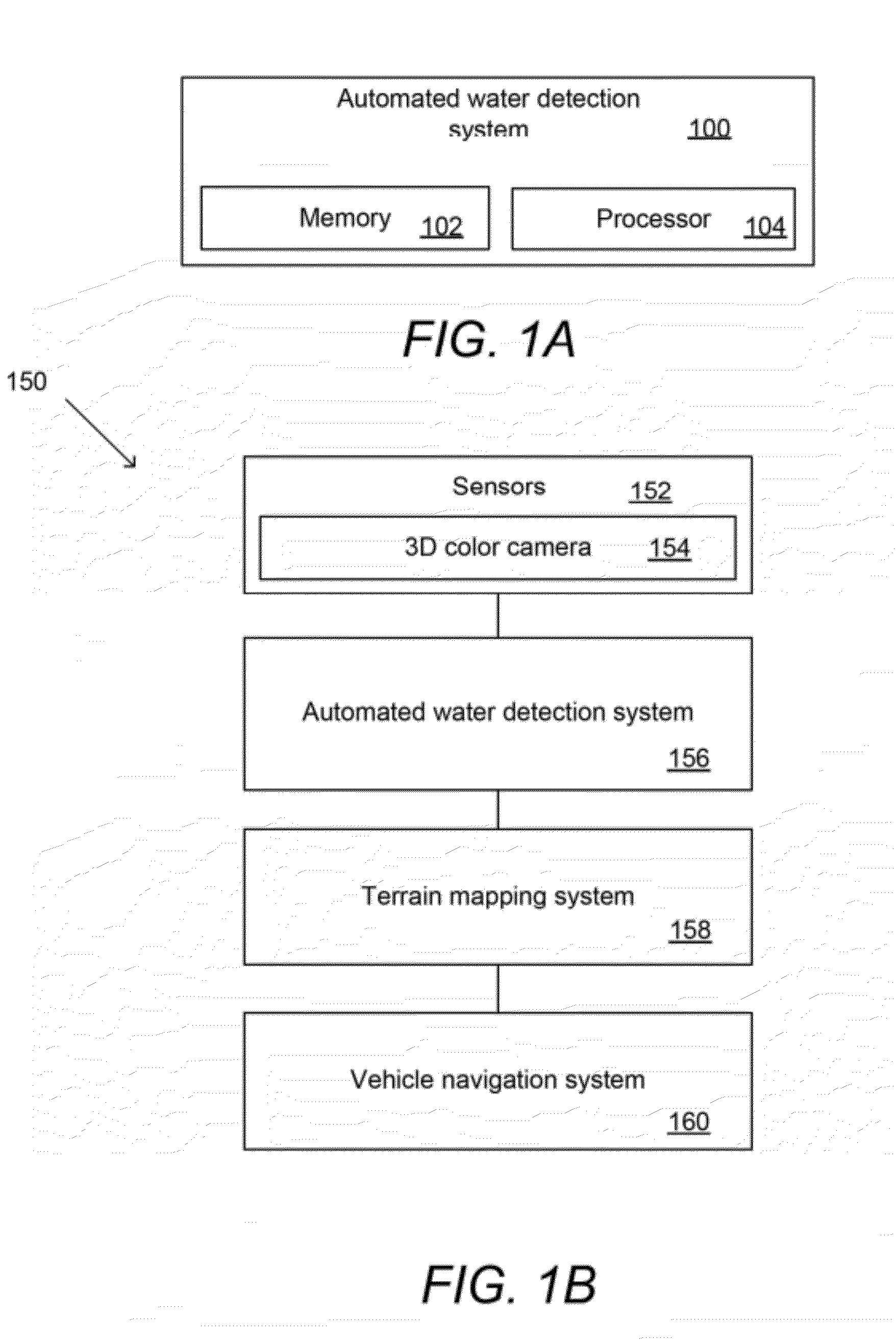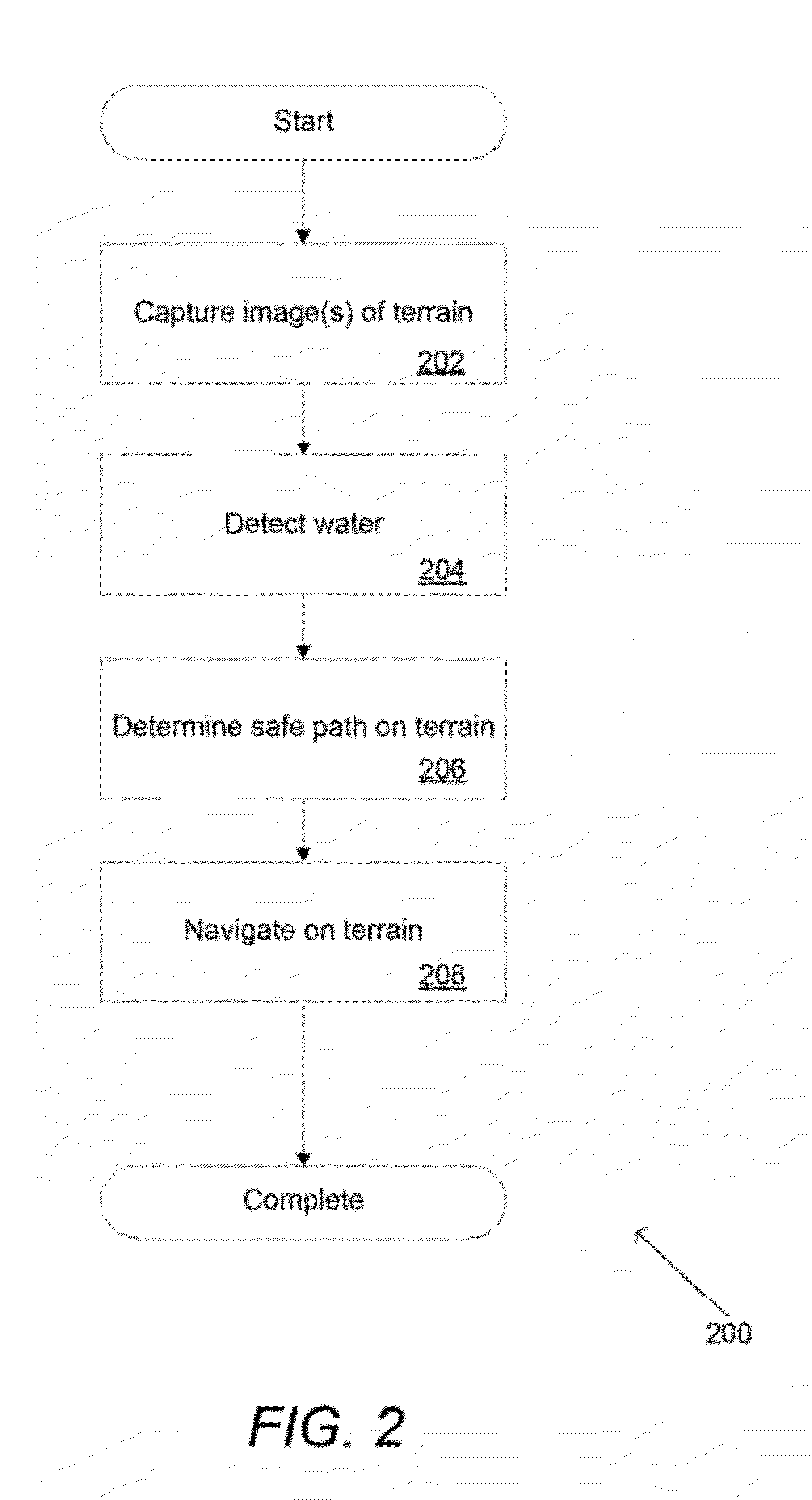Systems and methods for automated water detection using visible sensors
a technology of visible sensors and detection systems, applied in scene recognition, instruments, computing, etc., can solve problems such as damage to vehicles designed for terrestrial use, water bodies can become significant hazards, and the ability to distinguish between water hazards that are simply detected on the ground and water hazards, so as to avoid erroneous detections
- Summary
- Abstract
- Description
- Claims
- Application Information
AI Technical Summary
Benefits of technology
Problems solved by technology
Method used
Image
Examples
Embodiment Construction
[0046]Turning now to the drawings, automated machine vision processes that utilize images of scenes captured by a 3D imaging system configured to image light within the visible light spectrum to detect water in accordance with embodiments of the invention are illustrated. Common 3D imaging system configured to image light within the visible light spectrum, such as (but not limited to) passive stereo visible sensors, can be utilized to avoid the complication and expense related to the integration of specialized sensors for water detection into an autonomous vehicle navigation system. Utilization of passive sensors also enables as little disturbance of the environment as possible, enabling stealthy detection of water bodies in unknown or changing terrain where discovery of the automated water detection system is not desired. In many embodiments, the water in a scene can be further processed to detect water hazards for avoidance when navigating over terrain. Due to the automated nature...
PUM
 Login to View More
Login to View More Abstract
Description
Claims
Application Information
 Login to View More
Login to View More - R&D
- Intellectual Property
- Life Sciences
- Materials
- Tech Scout
- Unparalleled Data Quality
- Higher Quality Content
- 60% Fewer Hallucinations
Browse by: Latest US Patents, China's latest patents, Technical Efficacy Thesaurus, Application Domain, Technology Topic, Popular Technical Reports.
© 2025 PatSnap. All rights reserved.Legal|Privacy policy|Modern Slavery Act Transparency Statement|Sitemap|About US| Contact US: help@patsnap.com



